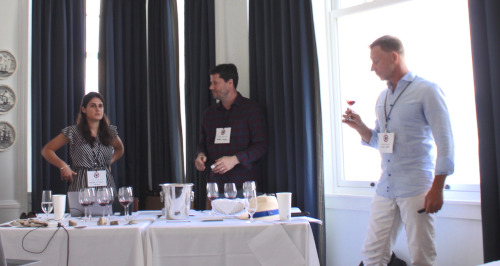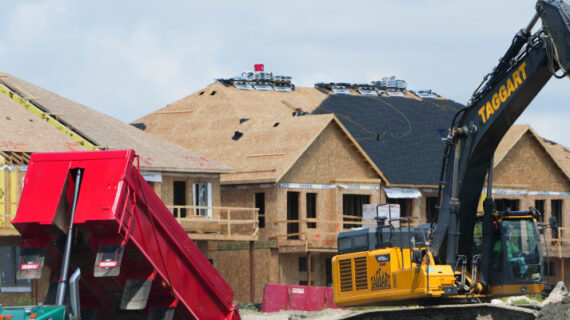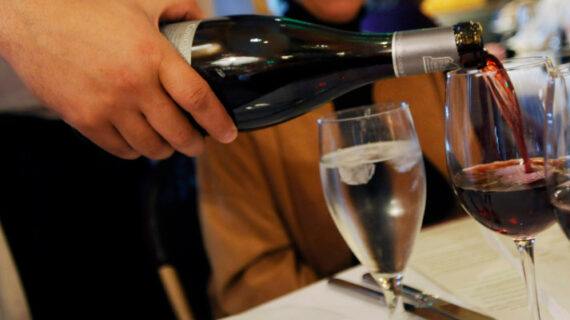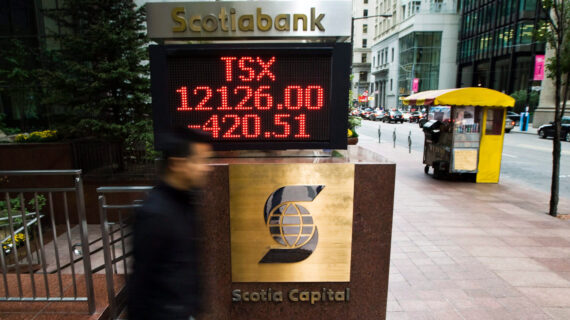Most of the wine in the world is made where most of the people of the world do not live, therefore nearly all wine marketing involves travel.
The travel could be just down the road from a rural vineyard to a city wine shop, or halfway across the world to an export market. For a while, the pandemic stopped all of it, but now it’s starting again to the general relief and joy of the world wine trade, and the journalists who cover them.
One group of wine traders on the move is the vignaioli of Chianti Classico, the DOCG appellation1“The acronym DOCG means Denominazione di Origine Controllata e Garantita (Controlled and Guaranteed Designation of Origin in English) and identifies the highest level of protection in the Italian wine classification. It is often accompanied or replaced by the European acronym DOP, which means Denominazione di Origine Protetta (Protected Designation of Origin in English). Wines with the DOCG appellation are subject to stricter production rules and have much more restrictive production regulations comparing to those ones with the DOC and IGT appellation.” https://www.italianowine.com/en/classification/appellations/docg/ in the heart of Tuscany whose wines are recognizable by the emblem of the black rooster. In March of this year, after a two-year absence, the consortium of producers held Chianti Classico Collection 20222Chianti Classico Collection 2022 – Download the Catalogue https://www.chianticlassico.com/en/event/chianti-classico-collection-2022/ once again in Florence. That wine show serves as an “ante prima,” or preview, of the wines that will be released into the market that year.
For those who can’t make it to the tastings, seminars, and symposia, delegations of producers are sent far and wide to the metropolises of key export markets. This week they visited one I live in, Toronto, to participate in a trade show and tasting, meet with their importers and customers, and apprise members of the media of what’s new. I attended to see and taste what has been going on in Chianti Classico since I wrote about the wines last year at The Hub.3As wine pivots away from restaurants, Chianti Classico is having a moment https://thehub.ca/2021-05-07/as-wine-pivots-away-from-restaurants-chianti-classico-is-having-a-moment/
What’s new in Chianti Classico during and since the pandemic is the introduction of 11 official Unità Geografiche Aggiuntive, or UGAs. Wine journalists who earned a C in first-year Italian can just muddle through a translation of the term as “Additional Geographical Units.” The consortium has sub-divided the Chianti Classico region, first mapped out in 1716 by Cosimo III, the de Medici Grand Duke of Tuscany, in the way that many other wine regions sub-divide into villages or communes. They are distinguished by particular features or terroir, like soil type, altitude, or the prevailing weather.
The eleven UGAs, introduced to the world last year are: Castellina, Castelnuovo Berardenga, Gaiole, Greve, Lamole, Montefioralle, Panzano, Radda, San Casciano, San Donato in Poggio (including the territories of Barberino Tavarnelle and Poggibonsi), and Vagliagli. There is a kind of wine collector, and indeed wine writer, who revels in the wine world’s infinite levels of acquirable detailed knowledge and has, by now, memorized the 11 UGAs. I am not one of them.
I had to look them up on the Consorzio website before enumerating them here, despite having been lectured on them in detail the day before at a seminar led by the Canadian wine writers Michael Godel and John Szabo MS, and 11 Chianti Classico producers representing each UGA.
The Consorzio seems to have sensed that the widespread application of the UGA on Chianti Classico labels might engender panic among memory-challenged winos because they have limited UGA classification to the very highest tier of their production: Gran Selezione. The Gran Selezione tier of wines, introduced in 2014, was the last change the Consorzio made to the rules of production before the UGAs.
It makes sense to label them for their particular sub-region because a) these wines can only be made from grapes from a specific vineyard, b) the grapes must be 100 percent Sangiovese, and c) the rules for making the wines are strict enough that they are more or less vinified in the same way.
The big change the Consorzio made before introducing the Gran Selezione level of wines was in 2005 when it was declared that all Chianti Classico wines starting in 2006 must be made of at least 80 percent Sangiovese. Any grapes used to blend into the wine must be from a list of approved red grapes, traditionally grown in Tuscany, such as Canaiolo or Colorino. The point being, as Michael Godel put it: “In Chianti Classico, what matters most is Sangiovese, because it is the noble grape that expresses its territory the most”. It makes sense that the Consorzio would introduce the UGAs to show off this particular talent.
The Gran Selezione’s released in the market this year are from 2016 and three that were on hand at the seminar certainly showed differently. The Dievole Gran Selezione Cigna di Sessina 2016 from the Vagliagli UGA showed bright red fruit, was fresh and alive with acid that brought water to the mouth and wanted food badly. On the other hand, the Castello di Verrazzano Gran Selezione Sassello 2016 from the Montefioralle UGA was brooding with dark red fruit going into black, and firm tannins rising above evident acidity and seemed to want time put down. The Il Molino di Grace Gran Selezione Il Margine 2016 from Panzano UGA was somewhere in between: in resonant balance with good weight on the mid-palate and fruit running dark cherry into blackberry. Three very different wines, though also recognizably siblings from the same Sangiovese family.
We tasted eight other Chianti Classico’s during the seminar, each from the other Unità Geografiche Aggiuntive. We tasted examples of the Annata, or “regular,” wines from 2018, 2019, and 2020. And we tasted examples of the Riserva wines from 2018. Again the diversity of styles was pronounced. What was also interesting was the differentiation in price, largely between well-known and established houses whose wines retailed between $50 and $100, and less well-known upstarts whose wines cost between $20 and $30. The fancy wines delivered on their brand promise, and the others could not be beaten for their quality to price ratio.
The 200 odd Chianti Classico producers, whatever they put on their labels, and however they classify their wines, are still delivering some of the best buys and most pleasurable food wines around. The topics discussed here are explained in much greater detail at the Chianti Classico website at chianticlassico.com.
And more information on the wines described can be found at dievole.it, verrazzano.com and ilmolinodigrace.it, respectively.




